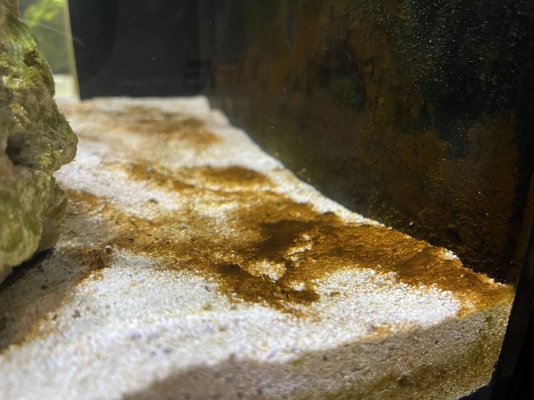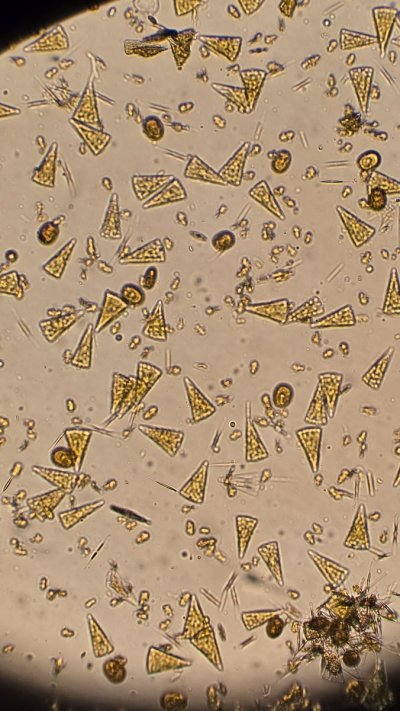Keko21
Valuable Member
View Badges
Partner Member 2024
Article Contributor
Hospitality Award
Ocala Reef Club Member
Reef Pumpkin Carver
MAC of SW Florida
R2R Secret Santa 2023
My Tank Thread
My Aquarium Showcase
Started my diatom growth about 2 weeks ago to fight amphidinium dinos and my diatoms have taken off! There are only one or two patches on the sand where I can see the stringy dinos. The rest appear to have been smothered by the diatoms so I think I am on the right track.
From videos I have seen though, everyone seems to show regression of all growth on the sand, where as I seem to have diatoms (or possibly a different algae?) taking over the sand to the point I cant really differentiate whats under it.
Question 1: is once I cant see dinos growing, should i syphon the sand bed (and leave the glass alone for now) to see if any dinos grow back? When do I know they are really gone?
Question 2: also starting to see cyano on the rocks which I understand is typical. Should I use chemiclean now or wait?
From videos I have seen though, everyone seems to show regression of all growth on the sand, where as I seem to have diatoms (or possibly a different algae?) taking over the sand to the point I cant really differentiate whats under it.
Question 1: is once I cant see dinos growing, should i syphon the sand bed (and leave the glass alone for now) to see if any dinos grow back? When do I know they are really gone?
Question 2: also starting to see cyano on the rocks which I understand is typical. Should I use chemiclean now or wait?





















